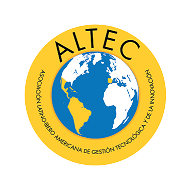| dc.contributor.author | Rücker Schaeffer, Paola | |
| dc.contributor.author | Dullius, Andréia Cristina | |
| dc.contributor.author | Maldonado, Rodrigo | |
| dc.contributor.author | Zawislak, Paulo Antônio | |
| dc.date.accessioned | 2021-05-28T00:17:28Z | |
| dc.date.available | 2021-05-28T00:17:28Z | |
| dc.identifier.uri | https://hdl.handle.net/20.500.13048/1293 | |
| dc.description.abstract | University
-
industry (U
-
I) interaction promotes a debate that is hinged on the National System
of Innovation dynamics.
Thus, by taking into account the different patterns of U
-
I interactions
in developed and developing countries, the literature has sought to categorize them, but hasn’t
paid attenti
on to the
interactions that may
contribute to leverage the different knowled
ge gaps
between universities and industries. So, this study aims
to assess the types of interaction that
narrow or bridge those knowledge gaps.
To achieve that, a new typology is proposed, which
seeks to contemplate several common elements often dealt with
in the literature in a
piecemeal fashion. These elements are viewed as a continuum, in which it is possible to
perceive the interactions targeted at practical and short
-
term application on the one hand, and
interactions oriented towards long
-
term joint re
search on the other, leading to an increasing
level of knowledge needed for innovation. In the new
typology model proposed the
interactions are classified into
training
-
oriented, diffusion
-
oriented, funding
-
oriented,
development
-
oriented, and research
-
orie
nted
, in which the latter two differ from the others,
and this difference lies in the quality of interaction and in the possibility of competitive
upgrade of the industries engaged in these interactions. The Brazilian 2010 Census data
available from the
CNPq Research Group Directory was used to test the model, which refers
to 6,792 U
-
I interactions. In this
context, analyzing the five types proposed, the most frequent
among all interactions were the development
-
oriented (39%), diffusion
-
oriented (23%), an
d
research
-
oriented (16%). It is likely that U
-
I interactions have improved in terms of quality in
an attempt to attain a joint higher technological development; however, this finding does not
neglect the existence of “points of interaction” in Brazil. | |
| dc.language.iso | eng | |
| dc.rights | info:eu-repo/semantics/openAccess | |
| dc.rights | Atribución-NoComercial-SinDerivadas 2.5 Perú | |
| dc.rights.uri | http://creativecommons.org/licenses/by-nc-nd/2.5/pe/ | |
| dc.subject | Interacción Universidad-Industria | |
| dc.subject | Tipología de interacción | |
| dc.subject | Innovación | |
| dc.subject | Países en desarrollo | |
| dc.subject | Brasil | |
| dc.title | Types of university-industry interaction: a new approach to bridge the gap between universities and industries | |
| dc.type | info:eu-repo/semantics/conferenceObject | |
| dc.relation.conferencedate | 19-22 de octubre, 2015 | |
| dc.relation.conferencename | XVI Congreso Latino-Iberoamericano de Gestión Tecnológica | |
| dc.relation.conferenceplace | Porto Alegre, Brasil | |
| dc.contributor.corporatename | Federal University of Rio Grande do Sul | |


